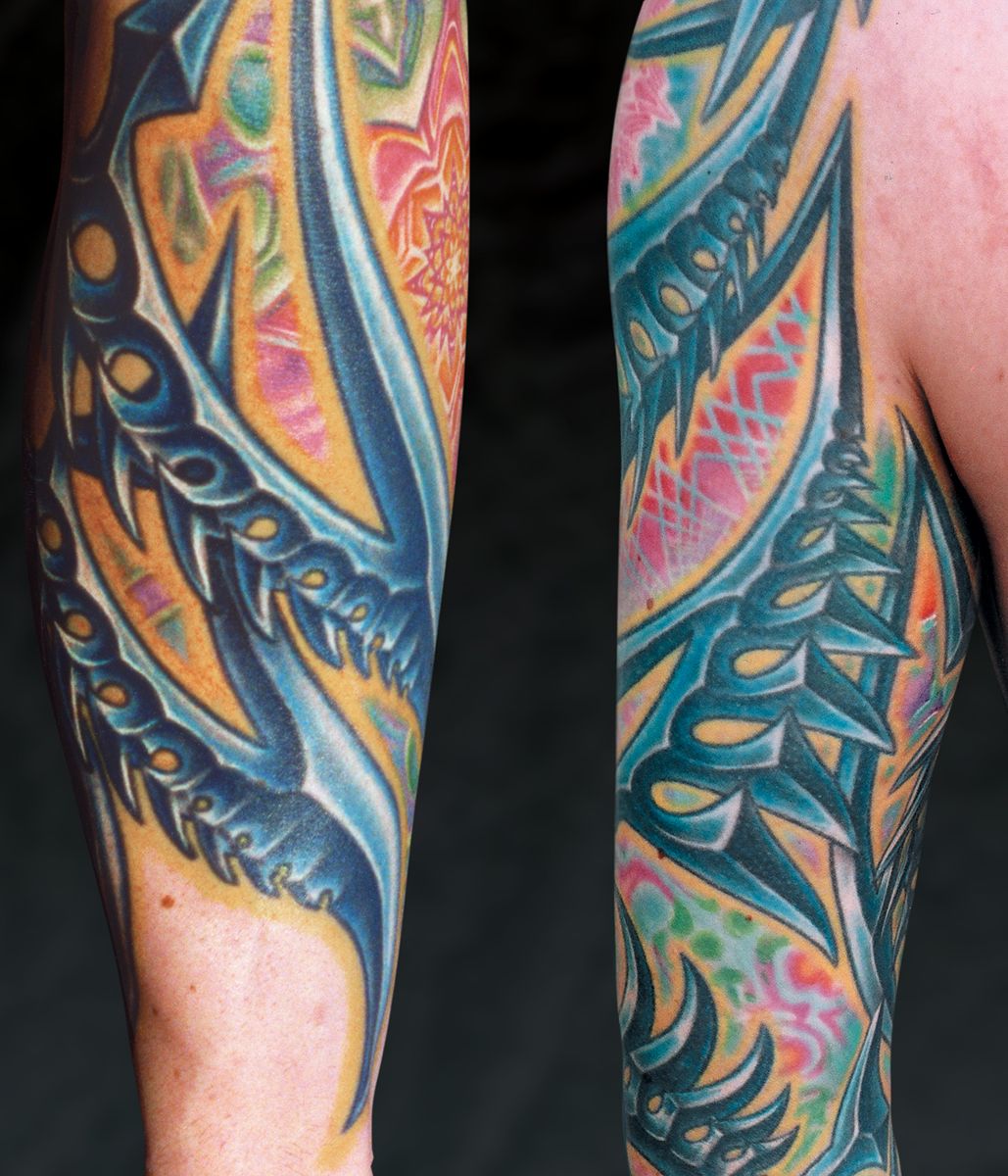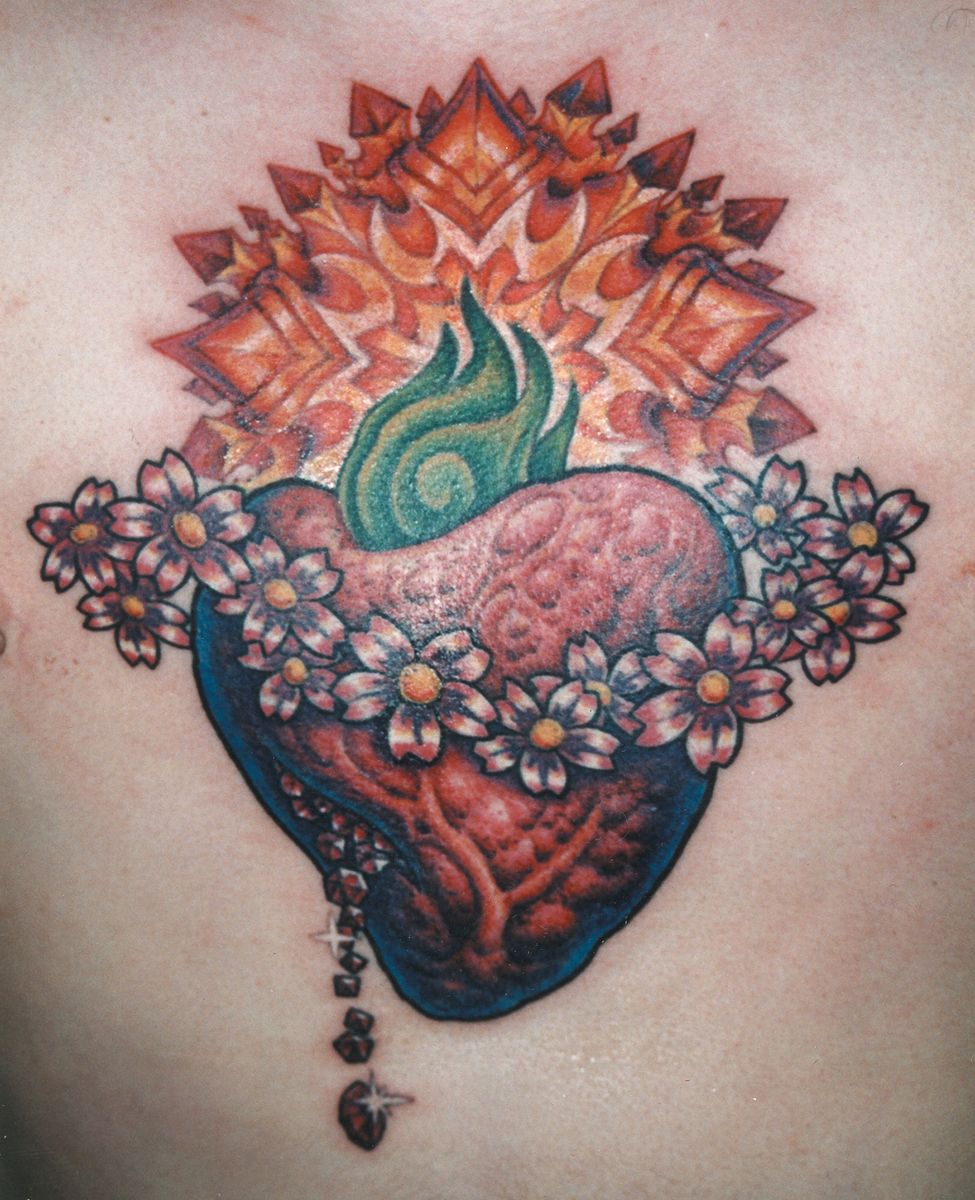Fig. 29a shows a colorful adaptation of the traditional tribal approach. Strong black outlines and edges, heavy black shading and deep blue coloring, along with high-contrast large scale white highlights, make the foreground tribal shapes stand out boldly from the softer background. A 1/4” (6mm) yellow glow around the tribal shapes creates a light detail-free zone that helps separate the two layers of elements from each other; if any background details got too close to the foreground shapes, they would begin to compete for attention and would compromise clarity. The background is free of any black or dark outlines, and is primarily of a warmer color scheme that avoids dark concentrated colors or any kind of blue, ensuring that the background separates clearly from the tribal shapes. The background colors are kept within a limited value scale, while the tribal shapes use the full range of value for maximum impact.


In Fig. 29b we have an example of a simple pos-on-neg relationship, where the entire design is contained inside its outlines and no background is used. The bottom edge of the heart in particular is dark enough to strongly contrast the blank skin around it. The starburst above it is more delicate, but has most of its darker colors concentrated near its outer edges to give it strength and integrity despite its lack of strong outlines. The center part of the starburst was done in lighter colors, allowing the green flame to stand out in front of it with a strong pos-on-neg relationship of its own. The blossoms on both sides of the heart were colored with rich enough hues that give them pos-on-neg contrast with the blank skin around them, but the blossoms inside the heart were kept softer against the richer colors of the heart, giving them a clear neg-on-pos relationship with the heart. Notice how the coloring in the heart gradates to a deeper shade as it approaches the flowers, allowing for more clarity in the flowers’ neg-on-pos relationship. Any future work added around this piece would need to be kept soft near the heart, preferably fading into blank skin in the area closest to the existing tattoo.
Join the discussion in the forum.